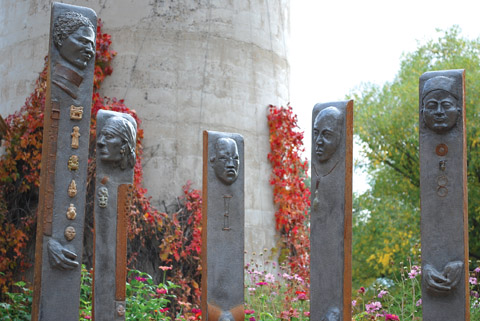Fall Flamers: Fiery Autumn Plants
28 Sep 2011
Kick up the color in your garden with these fiery autumn plants.
By Panayoti Kelaidis Colorado autumn is rightfully celebrated in our mountains—crisp air, golden aspens, azure skies and puffy cumulus clouds. It’s the stuff dreams are made of!
- Left: autumn crocus by Panayoti Kelaidis. Center: cushion spurge-spring by the Dow Garden Archives, Bugwood.org. Right: cushion spurge-fall by Panayoti Kelaidis

- Left: Hardy fuchsia by G.A. Cooper. Center and right: dalmation cranesbill and cape figwort by Panayoti Kelaidis

- Left: Japanese Barberry by Richard Old, courtesy Bugwood.org. Center: three leaf sumac by James H. Miller. Right: Mexican sage by Panayoti Kelaidis


- Left: Rabbitbrush by Panayoti Kelaidis. Center and right: Great Plains Blazing Star and evening star by Dave Powell, courtesy Bugwood.org.
 Panayoti Kelaidis is director of outreach and senior curator at Denver Botanic Gardens.
Panayoti Kelaidis is director of outreach and senior curator at Denver Botanic Gardens. 











